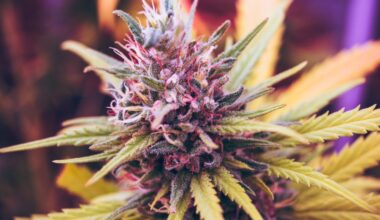Justin Trouard thought he was doing a favor when he agreed in January to look at the books of a struggling, licensed Colorado marijuana cultivation company to see if he could help turn the business around.
Instead, the CEO of licensed outdoor cultivator Mammoth Farms stumbled onto “the blueprint for how to launder marijuana” in and out of the state’s regulated industry, he told MJBizDaily.
While examining the cultivator’s track-and-trace records in Metrc, a widely used software program that’s Colorado’s mandated seed-to-sale compliance tool, Trouard noticed some suspicious activity.
- In one column, the company reported purchasing 25 pounds of cannabis flower from an unidentified cultivator for $16,250. That’s a normal transaction at Colorado’s average market prices in 2025.
- In another column in the same row, the company entered what it claimed to have done with the market-rate flower: The cannabis was sold to another cultivator, but this time as flower intended for extraction into distillate for vaporizer cartridges – for $20.
In other words, the business reported a loss of $16,230 on the transactions.
Trouard said the business’ records for 2024 showed many similar losing deals.
In all, the business reported buying $3.4 million worth of cannabis flower that it then resold for $70,000, a claim Trouard’s Mammoth Farms alleges in a March 10 lawsuit filed against Colorado’s Marijuana Enforcement Division (MED).
Following the data leads to startling discovery
Trouard doesn’t believe the business struggled because it chose to lose millions on repeated bad deals in which it bought expensive source material and converted it to a lower-priced product.
Instead, according to the Mammoth Farms lawsuit, the business likely diverted legally grown cannabis flower to the illicit market – and then inserted unlicensed hemp-derived THC oil into the flower’s place that was then sold in vaporizer cartridges at licensed Colorado marijuana stores.
In other words, Trouard believes he found what amounts to a how-to guide for inserting illicit cannabis into the regulated marijuana market.
That’s a practice known in the $32 billion regulated marijuana industry as “inversion,” and it’s one that operators in several states say is a growing problem that jeopardizes legitimate businesses.
All the business’ transactions examined by Trouard were reported to the MED via the Florida-based Metrc platform.
But instead of flagging the transactions as suspicious and taking action, Colorado regulators did nothing, the Mammoth Farms suit alleges.
A spokesperson for the MED said the agency could not comment on Trouard’s inversion allegations, citing the pending lawsuit.
That’s despite the fact that what Trouard outlined to MJBizDaily in a series of interviews goes beyond what’s alleged in Mammoth Farms’ initial March 10 filing.
Metrc, which is not accused of any wrongdoing and likely does not have access to Colorado data on its platform, did not respond to an MJBizDaily request for comment.
In interviews with MJBizDaily, Trouard declined to identify the business but said the company still holds a Colorado license.
Since the filing of the lawsuit, Trouard identified a similar pattern at another licensed Colorado company he also was asked to help with, he told MJBizDaily.
The discoveries raise questions about the value of track-and-trace systems.
But, more importantly, they also highlight the issue of “inversion” – a method of thwarting the law that the architects of adult-use marijuana legalization did not anticipate.
Is inversion new threat to marijuana industry?
Since the beginning of regulated marijuana sales in the United States, state lawmakers and regulators have emphasized the risk of “diversion” – cannabis grown with legal protections that’s then sold on the illicit market.
Guardrails such as seed-to-sale track-and-trace systems were mandated across the country to prevent diversion and satisfy the multitude of legalization skeptics.
However, operators in regulated marijuana markets claim that inversion, with cannabis grown illegally but inserted into legal channels and sold in licensed stores, is as equally concerning as diversion.
The practice of inversion is becoming increasingly widespread, according to licensed operators, who say that regulators are failing to stop it.
And Colorado regulators monitoring Metrc-supplied data ought to have suspected inversion in this case, Trouard said.
“This is what’s taking place” throughout Colorado, he contends.
Operators in other states, including New York, echo Trouard’s complaints, suggesting that “inversion” is a known and growing issue industrywide.
At a public meeting in December, former New York Cannabis Control Board member Jennifer Gilbert Jenkins called inversion the marijuana industry’s “dirty secret that everybody (in the sector) is talking about.”
But so far, the issue has yet to raise alarms at state legislatures or regulatory agencies, critics say.
Inversion likely also costing state tax revenue
If Trouard’s allegations are correct, inversion could have another troubling effect – a loss of state tax revenue, and at a time when many states are scrambling to close budget deficits.
In California, for example, the excise tax on cannabis is scheduled to increase to as much as 19% on July 1.
Many licensed operators say such a hike would encourage even more consumers to patronize the illicit market and heap more woes upon the struggling regulated industry.
Cannabis is subject to a 15% excise tax in Colorado that’s charged “on the first sale or transfer from a retail marijuana cultivation facility to a retail marijuana store or retail marijuana product manufacturing facility,” according to MED guidelines.
But as the March 10 lawsuit alleges, since “cultivation-to-cultivation sales are generally not taxed,” the system can be cheated.
The Metrc data that Trouard analyzed demonstrates one possible method of tax evasion, he said.
Since the excise tax isn’t imposed until cannabis leaves a cultivator for a manufacturer or retailer, it also means the licensee reduced $3.4 million in taxable sales, the value of the original flower purchased, to $70,000, the value of the product sold for distillate extraction, the lawsuit alleges.
That’s a potential loss of $500,000 in excise taxes that the state would otherwise have collected, according to the lawsuit.
According to Colorado data, marijuana excise tax revenue in the state has remained relatively stable even as overall annual revenue has declined to pre-pandemic levels – a decrease that most observers attribute to stagnant sales, not any hijinks along the supply chain.
But depending on how widespread the alleged inversion problem is, Trouard believes the state’s excise-tax losses over time might exceed $100 million.
Despite Colorado’s apparent lost tax revenue, “It’s obvious no one was paying attention to this,” Trouard said.
Chris Roberts can be reached at chris.roberts@mjbizdaily.com.
Medical Disclaimer:
The information provided in these blog posts is intended for general informational and educational purposes only. It is not a substitute for professional medical advice, diagnosis, or treatment. Always seek the advice of your physician or other qualified healthcare provider with any questions you may have regarding a medical condition. The use of any information provided in these blog posts is solely at your own risk. The authors and the website do not recommend or endorse any specific products, treatments, or procedures mentioned. Reliance on any information in these blog posts is solely at your own discretion.






